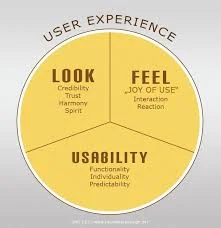According to Interaction-Design.org,
“User experience (UX) design is the process of creating products that provide meaningful and relevant experiences to users. This involves the design of the entire process of acquiring and integrating the product, including aspects of branding, design, usability, and function.”
In teaching business/technical writing—I call it WORKPLACE WRITING—UX should be our main focus.
Currently, college classes in workplace writing tend to emphasize genres, teaching students formats for memos, reports, resumes, blog posts, letters, technical directions, process descriptions, etc., etc. Workplace- writing instructors seem to believe that introducing students to these generic formats and having them practice a few of them throughout the semester will give students useful writing skills.
I disagree.
How much more useful would it be to students to give them a set of writing skills they can apply to any kind of practical writing wherever they end up in the world of work?
That’s the approach I take, the approach used in my textbook, Mastering Workplace Writing. It emphasizes UX, the whole process of UX:
How to generate USEFUL CONTENT for the real reader
How to ORGANIZE that content logically
How to produce helpful DOCUMENT DESIGN
How to construct PARAGRAPHS to serve readers best
How to manage SENTENCES that are clear and appropriately emphatic
How to select WORDS that ensure plain English and accuracy
How to deal with MECHANICS to make sentences clear.
The workplace writing concepts and techniques teach students to DESIGN A READING EXPERIENCE (DARE) for the real reader no matter what genre or platform is used. This tools-based approach makes students mindful of their obligations to the real reader and helps them control their messages from content to commas. That’s the essence of UX.
THE FIRST EDITION OF MASTERING WORKPLACE WRITING SOLD OUT, SO WE’VE PRODUCED MASTERING WORKPLACE WRITING 2.0
We’ve added a new index and a new appendix on graphics to get that important conversation going. We’ve also added many new marginal illustrations and explanations, which student are finding very helpful.
Check out Mastering Workplace Writing on Amazon. Ask me for your free 125-page Teacher’s Guide (pdf). As always, I’m glad to answer any questions. Get busy with UX.
Also check out my 200-page e-book (many pictures!/$9.97), Mindful Writing at Work.
https://gumroad.com/l/mindfulwriting
Please LIKE us and follow us on FaceBook.
